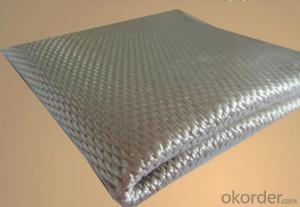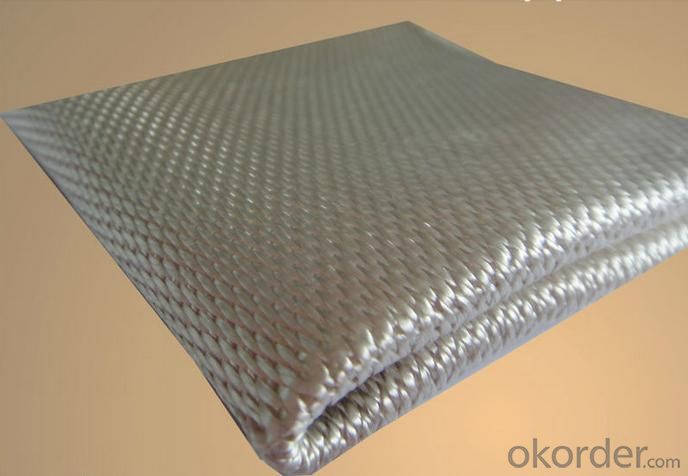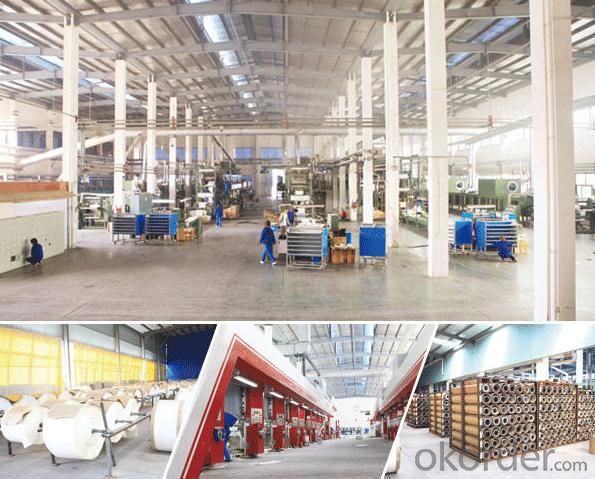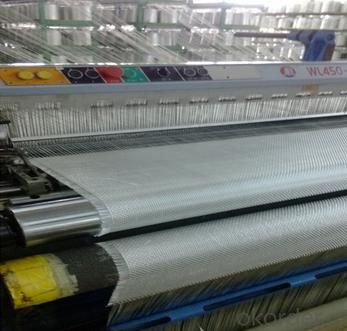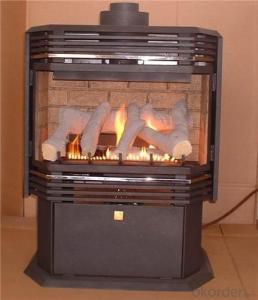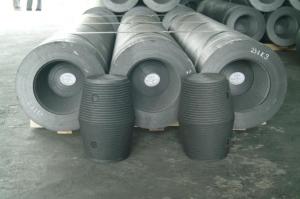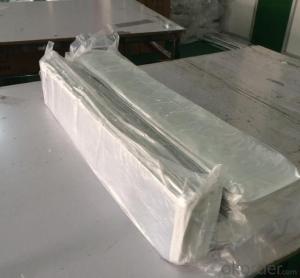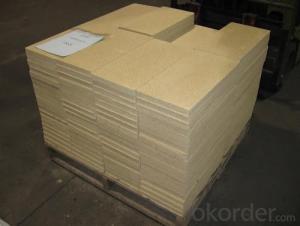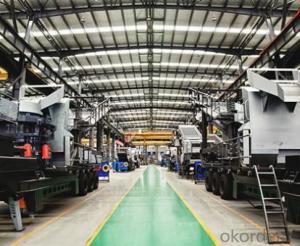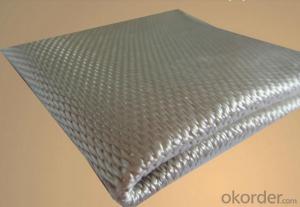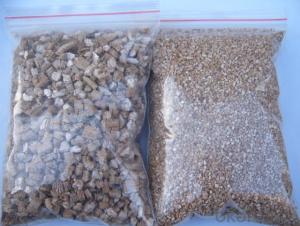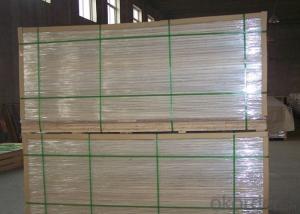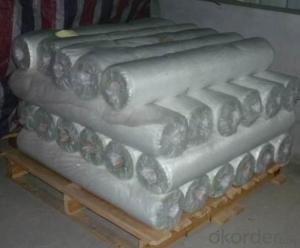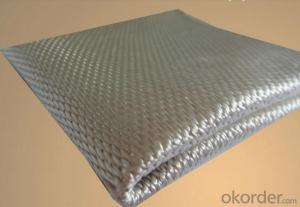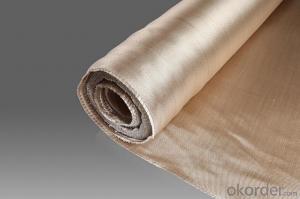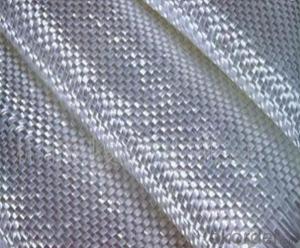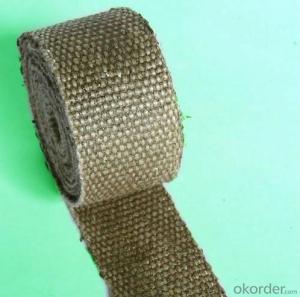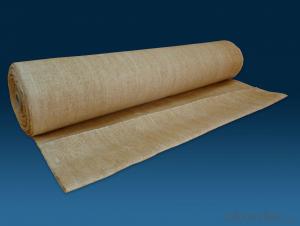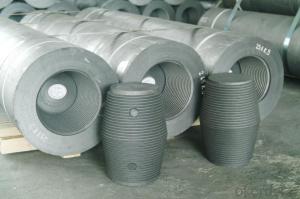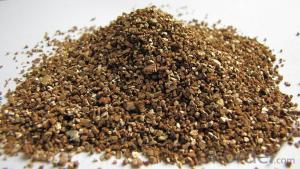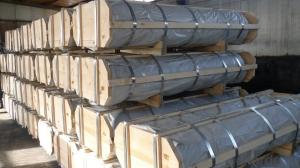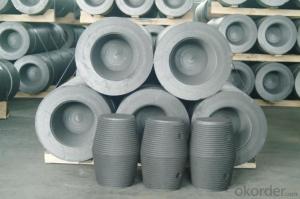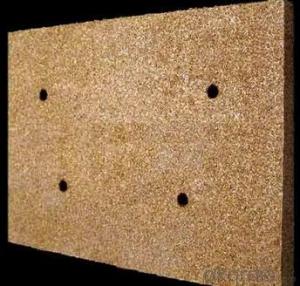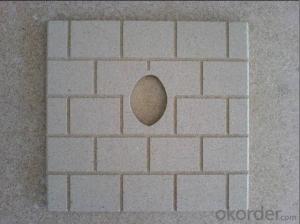E-Glass Double Four Axial Vermiculite Fabric Cloth
- Loading Port:
- Tianjin
- Payment Terms:
- TT OR LC
- Min Order Qty:
- 500 m²
- Supply Capability:
- 200000 m²/month
OKorder Service Pledge
OKorder Financial Service
You Might Also Like
1.Products Description of E-Glass Double Four Axial Vermiculite Fabric Cloth:
E-Glass multiaxial fibreglass fabric is made of e-glass direct roving parallel aligned in 0º,90º, +45º, -45º, then stitched with or without a layer of chopped strand mat.
Each layer is typically oriented in one of four directions; Standard configurations offered by multiaxial fabric suppliers include biaxial(0º, 90º), double bias(+45º, -45º), triaxial warp(0º, +45º, -45º), triaxial weft(90º, +45º, -45º) and four axial (0º, 90º, +45º, -45º).
2.Features of E-Glass Double Four Axial Vermiculite Fabric Cloth:
Good workability; Shock resistance; Good tightness; Good thermostability.
Resistant to corrosion; Heat preservation; Heat insulation; Erosion - resistant.
High insulativity; Low heat capacity; Long working life; Non-toxic; Good flexibility.
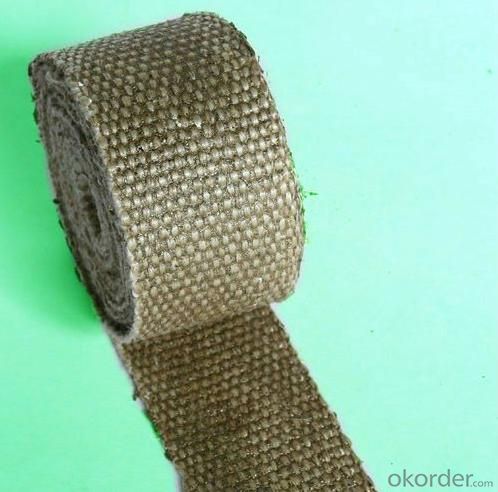
3.Application of E-Glass Double Four Axial Vermiculite Fabric Cloth:
It’s compatible with UP, Vinyl Ester and Epoxy etc, used in GRP pultrusion process, hand lay-up process and RTM process etc, out-made products include GRP boats, automobile parts, wind energy blades etc.
Heat radiation resistant.
Kiln fabricating.
Valve fabricating.
Flange sealing fabricating.
Fire-proof door fabricating.
Fire resistive material fabricating.
Covering cloth.
Fire-proof suit fabricating.
Heat insulation curtain.
Safety/welding blankets.
Sound absorption.
4.Technical Data of E-Glass Double Four Axial Vermiculite Fabric Cloth:
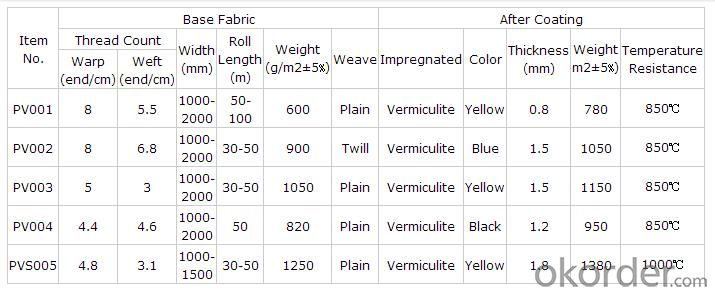
- Q: I started growing herbs indoors a few weeks ago. They are in seed starter soil that I recently mixed with some good topsoil. I water them daily and have them in a sunny window. Problem is, that they seemed to have a hard time surviving and I‘m trying to troubleshoot to why.I have chives and they were growing alright, and i read that I should trim them down when they get a bit unruly, so I did and soon after they started struggling. It‘s still alive, but looking flimsy and I have strands that are dying on me. It‘s looking a little weaker everyday. I‘m also having this issue with dill. Thanks to anyone who can help!
- hi! nicely attempt and shop the room heat, so around seventy 5 ranges because of the fact vegetation cant thrive with consistently chilly temperatures. Now for water, attempt and shop the soil moist, yet not too moist. Kinda like the consistency of a wrung out sponge. in line with risk you ought to look at your community gardening keep, or perhaps abode Depot or Lowe's, for an organic and organic herb food. It would not would desire to be organic and organic, it is your decision! solid success alongside with your backyard, and that i desire this helped! Blake:)
- Q: i have vermiculite that i use for my leopard geckos eggs but i got loads left but want to know if i can use the vermiculite as my adult leopard geckos substrate as i have him on calcium sand at the min so can i use vermiculite or not?????
- The garden center at Home Depot.
- Q: My family and I are trying to make a garden. We're reading a book about it and it said to make a mixture between Pete Moss, Cow Manure, and Vermiculite. I made a box, put wet newspaper on the bottom and made the mixture. But we ended up adding 3x the amount of Pete Moss needed for the mixure.Will this still work for making a vegetable garden? We're worried it may dry up the plants, but we don't know much about gardening so we don't know for sure. We don't have enough money to go out and re-buy all the materials. Any help at all that you can give would be great! Thanks!
- You should use vermiculite mixed with water at a rate of 4 parts vermiculite to 1 part water. The container will also need a lid with air holes.
- Q: can I use store bought sand to incubate bearded dragon eggs?
- The texture is the percentage of sand silt and clay in a soil. Your clay has the smallest particles so it will have smaller particles and bind together more readily. Here is a site that can help you determine the texture of your soil. soil.gsfc.nasa /pvg/texture2.h... Your topsoil could be a clay, loam or sand or a combination of the three. The texture of the potting soil is probably the most porous since they add amendments (such as vermiculite) to increase the porosity.
- Q: i was going to buy one but then i talked to like 3 different breeders that say they dont even use uncubators just put them in hatchrite and keep them in room temp?
- Panther chameleon eggs seem to tolerate a wide range of temperatures during incubation. These temperatures seem to influence the duration of incubation: from 180-365 days. In the incubator, the eggs should be kept in vermiculite with an average moisture of 0.7 parts water, and 1 part vermiculite. Too much moisture can cause egg bursting and death by suffocation. Incubation of panther chameleon eggs kept at the same moisture ratio stated earlier at a day-to-night fluctuation of 65°-78°F hatch in 7-10 months. If you can match these temperature and humidity conditions in your home, then there is no need for an incubator. To be safe, I would get one until you establish a breeding method that you feel 100% comfortable with, if you plan to continue breeding. If you incubate at about 72-73 degrees, you should see hatching between 8-10 months.
- Q: its about paint
- Ummmmm, I work in the paint industry, you need a smooth surface to begin with to get a smooth finish. If you have a textured paint or a texture finish (like vermiculite or render) then youwon't be able to get a smooth finish without stripping off the surface first, troweling over the rough surface with plaster or render to smooth it out or sand the surface smooth before applying a sealer/undercoat then 2 top coats as a minimum. Brushes and rollers leave marks on a wall or ceiling for various reasons, mostly the paint is too thick, the brush is too old or won't hold paint correctly, sanding down between coats can help with the final result, watch for streaks and runs in the paint, build up several thin coats instead of a few thich coats and your finish will be much better. Good luck.
- Q: Any easy ways or idea‘s how to make an home made Incubation for my leopard gecko‘s egg?? She hasn‘t had them yet but she is showing signs of pregnancie. Any one help me out???Thanks alot, Linden
- the CHEAPEST way to go about it is to fill a styrofam box with some vermiculite, then, with a sharpie, mark all your eggs. (so that you know which way is up) then, CAREFULLY transfer the eggs into the styrofoam, marked side up, so the embryos don't dislodge or whatever, then put them on an electrical heating pad. the kind you get at the drug store for about 20 bucks. it's like getting flexwatt and a rheo all in one! just make sure you get a sorta crappy cheap kind, since the good kind has an automatic shut off after a few hours, and you're gonna want this one turned on all the time for a bout a month. while you're at the store, grab a thermometer, (also found cheap at the drug store) and set it up to the desired temperature ( a poke around the internet will give you the right numbers for temps, and sexing) then it's just a matter of adding towels, or whichever to block and/or insulat heat.
- Q: Do you have to freeze the seeds before you plant them? What kind of soil do they need? How much watering do they need? How long until they sprout? What then?Thanks for answering
- Sequoia seeds do best soaked overnight in distilled water then chilled for more than 60 days in damp sand at 37 F. They do not need to be frozen just chilled in the fridge in a sandwich bag. About 40%-90% (depending on age and condition of seed) will sprout by 5 weeks but some will be sooner. Two germination methods The baggie method is to keep them in their stratification baggie with a suitably moist germinating mix. Vermiculite works fine, sand or even between damp paper towels. Only one damp towel on top though because they need light to germinate. The baggie is then stored under grow lights at moderate room temperature. You should not let the bag get warm or they may rot. Do not use an incandescent lamp only fluorescent or grow lights that do not heat the seeds. When the seeds begin to germinate, you remove the small plants, known as germinants, and plant them in a suitable container. Sprinkle them on soilless potting media for seed starts. Then lightly sprinkle a layer of the soilless media over the seeds. Make sure that you don't cover them too deeply they only need about 1/3 of their width, which means it is best to just barely cover them up. Set up lights. Even fluorescent lights will work for germination. Place a clear plastic cover over the media or mist very frequently to keep them just moist. Redwoods can be fed with a fertilizer for acid loving plants, they like a pH that is on the acid end from 4.5 to 6.5 in sandy loam. Apply fertilizer Valentines, Labor, Christmas days or spring, fall winter when water is available in the soil once they are planted out in full sun. N-P-K ratios should be 3-1-2 or 3-1-1 or a multiple of those like 6-2-4 at most. These are not fast growing trees.
- Q: We've used a vermiculite/perlite mix in the past with good results. Just wondering if anyone has used HatchRite. Is it as good as the company claims?
- Animal okorder
- Q: Expanded vermiculite with expanded vermiculite
- Baixin "brand expansion thermal tears coefficient of vermiculite is generally 0.07-0.07w/m.k, under normal temperature condition (temperature range of 20-30 degrees" letter "brand) technology performance expansion coefficient of heat conductivity and the relationship between particle size and bulk density of vermiculite as shown in the product specifications. "Letter" brand of expanded vermiculite refractory for 1300-1350 degrees, the safe use of temperature -30 to 1100 degrees "letter" brand. Swelling vermiculite, some moisture absorption rate is small, in the relative humidity of 100% in the environment, after 24 hours, the moisture absorption rate is generally not greater than 2%. "Letter" in the dry state, vermiculite, has good frost resistance, at -20, after 15 times of freeze-thaw, the grain size composition unchanged. Expanded vermiculite is inorganic, so it is free of fungus, does not decay, does not deteriorate, and is not easily bitten by moth eaten mice. "Shenbao" brand expanded vermiculite alkaline not acid and therefore should not be used for acidic erosion at.
Send your message to us
E-Glass Double Four Axial Vermiculite Fabric Cloth
- Loading Port:
- Tianjin
- Payment Terms:
- TT OR LC
- Min Order Qty:
- 500 m²
- Supply Capability:
- 200000 m²/month
OKorder Service Pledge
OKorder Financial Service
Similar products
Hot products
Hot Searches
